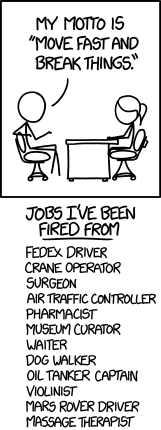Elephantdentistry’s main themes might seem a strange mix. They include (1) what’s going on with internet and social media industries, politics and practices, (2) experts, (3) living metaphors and catching them in the wild (fun with language), (4) feminism, (5) music and (6) Mosul. Here I’m getting most of these twisted together so let’s see how that works.
I caught three new living metaphors in the wild when I was in Wales recently, visiting the National Wool Museum. I tried a hands-on exhibit, picking up a handful of wool and following the instructions to pull and twist simultaneously until eventually I’d spun a yarn. Nearby was a painting of wool gatherers, women who would follow the drovers taking sheep to market and dart from hedge to hedge to collect scraps of wool. They would then sell their bags of wool to eke out their desperately poor livings. You could see how the scattering of wool and movement of the gatherers made sense of the metaphor, as it’s not a task that involves following a straight line. You would need to keep constantly turning, moving and switching your focus of attention. Hard work, and once you realise the point of all that apparent distraction it’s obvious that wool gatherers have had a bad press. Raw wool is indeed very woolly: it’s fuzzy, breaks apart easily and has no fixed shape.
The name overstated what the museum really was and did. It’s in an old textile mill, formerly Cambrian Mills, near Newcastle Emlyn not far from the mid-west coast, and most of the exhibits were about the mill itself, its owners, the machinery and the weaving industry, so there was almost nothing on knitting. (I make up for that later.) The mill used to produce blankets, shawls and woven wool cloth used for miners’ shirts and soldiers’ uniforms. Most of the textile exhibits were of shawls and blankets. When they were taken off the looms, large pieces of cloth had to be washed and then stretched out on tenterhooks, on tenters, in tenter fields. There the cloth would be left hanging, waiting until it was ready. We saw a tenter, with hooks, in a park displaying information about the area’s traditional crafts.
Before machinery and mills, spinning used the older technologies of spindles and wheels and was largely women’s work carried out at home as ‘cottage industry’. It took tedious, long hours to earn much of a living and so telling stories was intricately associated with the work of busy hands that didn’t require much mental engagement. Weaving was another cottage industry.
Now being able to work virtually and from home, according to some optimistic commentators, has brought in satisfying new cottage industries, once again involving women fitting in somewhat creative, but low paid work (even if paid at all) alongside domestic and family commitments. It’s also handy when there’s no other work available.
That’s the positive story being spun. Some experts disagree and have a bleaker but more informed analysis.
When I started researching women’s online practices years ago I remember being struck by the growth of knitblogs – blogs about knitting. It happened long before blogs were as common as they are now, and back then few of those blogs seemed to be commercial. Now I would guess most of them are a means to try and make money, one way or another.
I’ll get on to what Stephanie Taylor has to say about creativity, home working and precarity, but first I’m not dissing woolly creativity although I do still wonder about knitted cupcakes. I know they can be used as pincushions or given away but that doesn’t explain their ubiquity. The museum had a three-tier knitted cake, which is fair enough as they are the Wool Museum, but the cafe also had knitted cupcakes and they apparently sold well. Their very pointlessness seems to be the point – you can neither eat them nor wear them, so knitters can express a creative impulse without anyone giving or taking offence because nobody wants to eat cakes or wear handknits. This, on the other hand, is extraordinary and needs no excuse. It is the giant cardigan on display in Cardigan Castle marking 900 years of the town’s history. 
The cardigan for Cardigan was created by around 200 knitters, including schoolchildren and other volunteers alongside the two artists behind the project. It’s amazing. My photos can’t give you the sheer scale of it.
Even more impressive and with another woolly play on words are the wool churches created as part of the Wolly Spires project. These are models of the beautiful Lincolnshire churches built out of the wealth of the medieval wool trade, intricately knitted to represent all the details of their stone decorations and graceful architecture. Community groups worked on these too. It took 8 years for the teams to knit 6 churches.
They’re currently on display until mid January at the 20-21 Visual Arts Gallery in Scunthorpe so if you’ve ever wanted to visit Scunny, there’s a good reason.
These geographically-based communities of knitters are not anything like the virtual community I came across. I first found knitblogs around 15 years ago when I was researching internet ‘beginners’ and specifically the various online literacy practices (what they read, what they wrote and how) that women were developing for themselves. That was a time before the big social media corporations, so for most people there were websites, email and not much else . Internet access was still fairly limited and there was already a significant gender gap in the UK. But I was struck by the fact that a lot of web designers were women. There seemed to be a connection between that and a sudden flourishing of knitblogs, i.e. blogs about knitting. Pixels and stitches made up colour patterns on screen or in wool. Designers needed to understand and create sets of instructions written in a specialised language. Both web design and knitting could involve home-based creativity, whether for pleasure or money. Back then, knitblogs were more about personal creativity and sharing stories about life as well as creations or wips (works in progress). They needed more technical online skills than blogging requires now. Those very personal blogs still exist, but knitblogs are now mostly about selling patterns or getting income through ads, which brings me back to Stephanie Taylor.
Taylor is one of the authors of an article on gender and creative labour, along with Bridget Conor and Rosalind Gill. Their research into the cultural and creative industries showed there were vast inequalities and pretty terrible conditions of work, hidden behind myths about the wonders of creativity. Work was often informal and precarious. People, women especially, coped with a ‘bulimic’ pattern of alternatively long hours and super-intense periods of work or nothing at all coming in. Stephanie Taylor has also analysed a more general phenomenon she calls the ‘new mystique’ of working for oneself, and how it traps women seeking to combine work and childcare into long hours and low pay. She discusses the language used to describe this type of home-based self-employment, including the term ‘cottage industry’ being revived by journalists, and picks up on the parallels between what’s going on in the fields of creative work and what’s happening with the growth of self-employment. They have precariousness, long hours and low pay in common as the price of apparent flexibility. Boundaries between work and home life disappear. We’re back in the world of the poor spinners.
Amidst a burgeoning social media economy, genres of self-enterprise have emerged that enable women to profit from creative activities located within the domestic sphere, including mommy blogging, lifestyle blogging, and craft micro-economies.
That link between working on websites such as blogs and creative crafts reappears in research by Brooke Erin Duffy & Urszula Pruchniewska. Catch Duffy (quoted above) being interviewed here. She has some sharp things to say about women working as social media editors. The title of her new book, out this year, nails the issue: (Not) Getting Paid to Do What You Love, subtitled Gender, Social Media, and Aspirational Work.
Drawing on interviews and fieldwork, Duffy offers fascinating insights into the work and lives of fashion bloggers, beauty vloggers, and designers. She connects the activities of these women to larger shifts in unpaid and gendered labor…
A tiny handful have lucrative careers but there’s a vast gap between them and the rest who make little or nothing.
Alongside these aspirational bloggers, there’s a secondary industry offering training and support. This blog makes nothing and luckily doesn’t have to try to earn anything, but I’ve participated in three training courses so far to get to know more about the blogging subculture. Most of the other participants were women, and even if they’d been sent by an employer in order to start up and run a company blog, they had ambitions to do with promoting their own creative outputs. The aspirations of some bloggers reminded me of a woman learning to use the internet for the first time in a class I ran in Peckham Library who told me hopefully back in about 2000 ‘You can make money out of this, you know’. I met some realistic and genuinely helpful trainers, but also one who suggested that any blog potentially had a substantial worldwide audience and could bring in regular income through adverts. Content, or a reason to blog apart from providing ad space, was irrelevant. Learn the techniques of the clickbaiters. Ten top tips for rescuing knitting disasters. The seven things you need to know about improving your blog.
Here’s some more from the hardworking knitters of Cardigan,  and finally a link to Mosul. The Welsh weavers had their own traditional textile patterns and the mechanical looms in the mill could produce more complex patterns or more cheaply, cloth with a simple stripe. Wool used to be vital to Mosul’s economy, although cotton was more important to the textile industry. According to Sarah Shields, writing about the nineteenth century,
and finally a link to Mosul. The Welsh weavers had their own traditional textile patterns and the mechanical looms in the mill could produce more complex patterns or more cheaply, cloth with a simple stripe. Wool used to be vital to Mosul’s economy, although cotton was more important to the textile industry. According to Sarah Shields, writing about the nineteenth century,
Mosul’s fabrics were mostly cottons woven in traditional patterns to appeal to the regional populations. The coarse cotton calicos (ham, cit) used for garments were bleached or dyed red or blue. One of the city’s specialties was alaca, a striped fabric used for zibun, the robes men wore. Weavers prepared women’s cloaks (izar) in assorted qualities, and special looms were employed for the wool and cotton blend abaya over garments. These textiles, as well as towels and headgear, were exported into the mountains, to Persia, Baghdad, Bitlis, Siirt, and as far away as Trabzon.
Did you know that the English word muslin for a lightly woven delicate cotton fabric derives from ‘Mosul linen’? It was thought to have been invented there first.

 Flummery pudding, also known as mahalabia
Flummery pudding, also known as mahalabia









